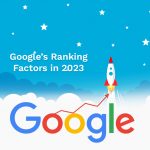If you have an online business, you must have a website, which you need to rank high on the search engine results. Search engine optimisation (SEO) is a marketing strategy you can implement for your business. If you rank high on the SERPs or search engine results pages, your website visibility increases, you get a wider audience reach, and you get more sales.
Your site structure tells how your website is set up and how its pages are designed to link correctly. This structure is one factor that search engines consider when ranking your site. If you have a site that isn’t set up accordingly, search engines may find it challenging to get it indexed. It is significant for SEO that the structure is created properly.
The following are the particular areas of the site structure that affects SEO:
1. User Experience (UX)
User experience is the overall experience of a person in using your website, especially when it comes to how easy or pleasant it is to use. It is very challenging for web designers to keep the attention of their audiences. Therefore your website needs to be appropriately structured and has compelling content.
Use clear and precise headings for your site content to help users understand your website. If they can do this, it would be easier to engage these users. Your site should be easily accessible and can be used by people who are not tech-savvy. Great user experience can offer better rankings.
2. Crawlability
Crawlability is a special word used commonly in SEO, which means how easily the contents of your website can be accessed and indexed by search engines. If your site is well structured, it can boost your SEO ranking, as search engine spiders can index your pages in the shortest possible time. Indexing allows your content to get easily located on the internet.
3. Loading Speed and Site Performance
A slow-loading site can be frustrating, and most users tend to bounce off this site. To have an edge on SEO, your site should improve its loading speed and overall performance. Using cache ( or high-speed data storage layer that allows future requests for said data to be served up faster than possible). Updating your plugins is also recommended, and you can check if your site structure needs a redesign for improved loading time and others.
4. Presentation and Branding
Make sure your site has a professional design to attract visitors and make them stay longer and interested in what you offer. Create a main page or a home page that tells visitors what they can expect from your site; the sub-pages contain all the content details they can easily locate.
5. Security
Search engines also look into your site’s security when determining your ranking. Protect your site from getting hacked because it may cause revenue loss and negatively affect your ranking. To keep your website secure:
– Use a Content Management System (CMS) that is up-to-date,
– Install a security plugin; keep it updated,
– Use strong passwords and have them changed regularly, and
– Back up your site.
6. Mobile Friendliness
Your website should be structured or designed to work similarly across devices, especially smartphones. This means that everything is usable and everything stays the same. A mobile-friendly website will increase traffic and positively impact your online visibility.
7. Content and Links
All websites have content. These are the words written on the site that let people know about your website, what products or services you offer, and how they can benefit from your offerings. Make sure that your contents are original and of high quality. Always check your site for dual content, which is unsuitable for you. The internal link structure plays an important role both for users and search engines. They provide information to search engines as well as helping users navigate your website.
8. Format
The URL (Uniform Resource Locator) is the address that identifies each page of your site. Use only short addresses, so your website address can be easily remembered and found on the internet.
9. Keywords
Keywords are a term or groups of words used by internet users to perform a search in a search bar or search engine. These are important aspects of your site’s SEO that can boost search and visibility.
10. Images
Images are an integral part of the content strategy of your website. They are used for various reasons – to enhance your content, to illustrate your story, to present your product/s, or in ad displays—post high-quality images on your site and those that will not slow down your loading time.
Site structure is all about how your website’s content – the pages and posts – are organised in your site, meaning how these are grouped, linked and presented to your site visitors.
Conclusion
For the best SEO results, contact us to ensure that your website is structured appropriately for your business and your users.





